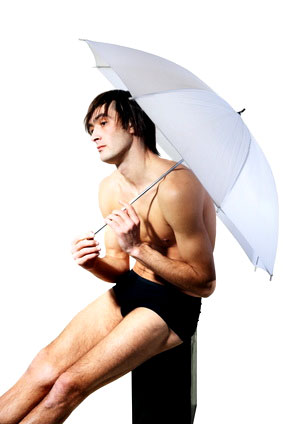It is not at all unusual for students and professionals working in photography to know people in the performing arts. The relationship can by symbiotic – they might provide the photographer access to performances, performers and all that might go with those things. And, they might need you, the person with the camera and skills – for head shots (actors) or a comp card (models). As most are not yet rich and famous, they may want you to do it on a shoestring budget at that.
This is not a bad proposition for an early-career photographer. Particularly for students, it can be the beginning of their own work in a professional context. Imagine what it might mean for those attending photography schools in NYC (the New York Film Academy among many others), where literally thousands of young people are vying for fashion shoots, roles in TV and film, and on Broadway (or, more likely, off-Broadway). They need some pictures. And who else to supply them but someone approximately their age who will not charge an arm and a leg for it?
If you have been approached about creating portraiture for an actor or model, a few tips might help make it a successful project for both of you. They are:
Establish expectations: This means that you have to create rapport with your subject-client. Ask about their previous experience in front of a camera, including if it was bad or good for them. Have the individual send some pictures of themselves that they liked in advance of the shoot, as well as images they didn’t like. Also, ask them to provide an example of shots of other people who achieved what they hope to get out of a shoot.

A highly stylized shot requires extra effort in lighting and sets. Your model should know that generally costs more.
Outline the parameters: This is where you find out exactly what they want, and how much they are willing to pay for it. You need to know how many final, usable shots they will need. Do they want them retouched? Retouching will typically be more extensive with models, as actors get into trouble if they over-beautify themselves. As is standard practice for professional photographers, you will basically sell them license to use your photographs but you will not give them your RAW files. Much of this would be outlined in a contract template that you can get from the American Society of Media Photographers (ASMP), which provides online tutorials and forms on writing contracts. Keep in mind that all your work should remain your intellectual property, and the contract helps explain that to the client.
Find their most natural expressions: First and foremost, you need to make the subject as relaxed and comfortable as possible. This is a key skill – and perhaps the toughest task – for any commercial photographer working with human subjects. Here’s why: The human face is not capable of producing an authentic smile unless it’s truly felt. The involuntary muscles around the eyes simply do not match a mouth smile unless the person is truly laughing or chuckling or otherwise genuinely happy in the moment. One way to get the client to let go of natural tension in the face is to ask them to do goofy faces and to move the jaw and shoulders around. (Almost all people hold most of their tension in their jaw and shoulders.) When you start shooting, do not hold lighting or reflectors too close to the model/actor; they need to feel they have room to move in space.
In general, you should create close-up and full body shots of models, as well as hand shots if they expect to find specialized work in that area. Actors should tell you if they audition for serious, comedic, romantic or action roles – the kinds of photographs you create need to be consistent with those goals.
Each of these steps provides valuable and productive experience for both the photographer and the subject. Of course, with practice, you will get better at it over time – all the more reason to start doing this as soon as possible.
Authors Bio:
Brian Dilg is Chair of Photography at the Photography School at the New York Film Academy. In addition to 20 years of professional teaching experience around the world, his work has been published in The New York Times, Time Out, Village Voice and covers of books published by Simon and Schuster, Random House and Hyperion. He has also worked in post-production for major fashion houses, consumer products manufacturers and media organizations. He also has won awards as a filmmaker and worked as a director, cinematographer and editor of narrative, documentary, music video and commercial films.








